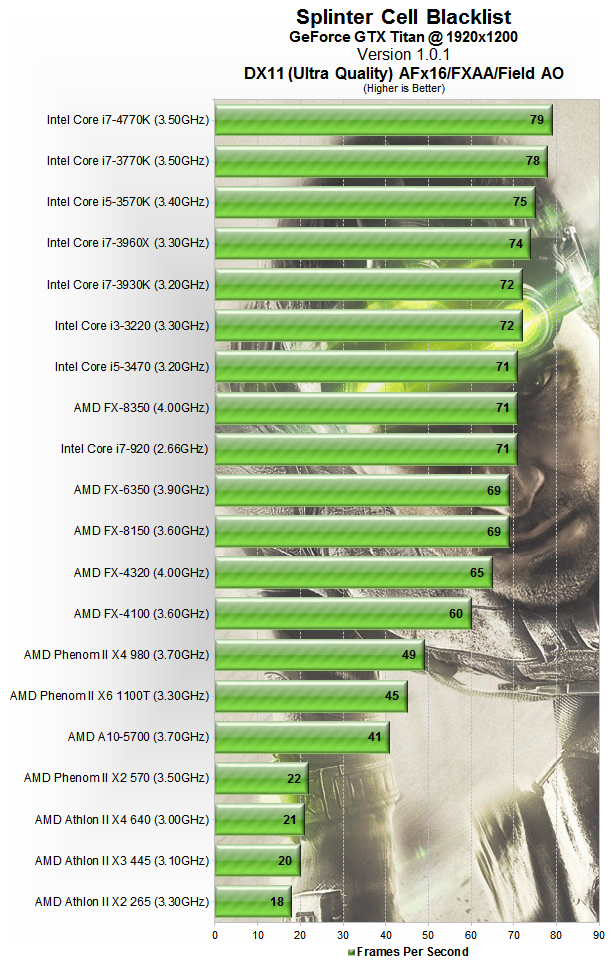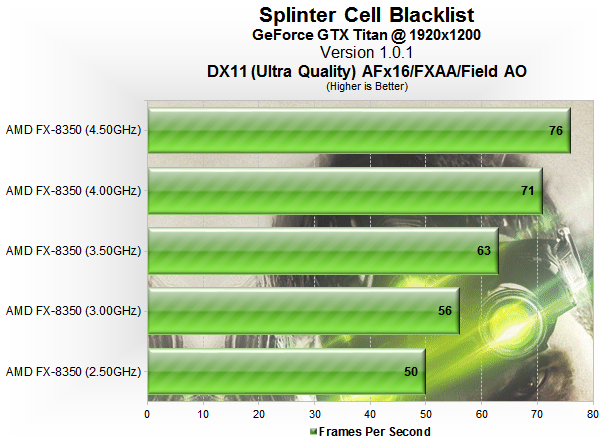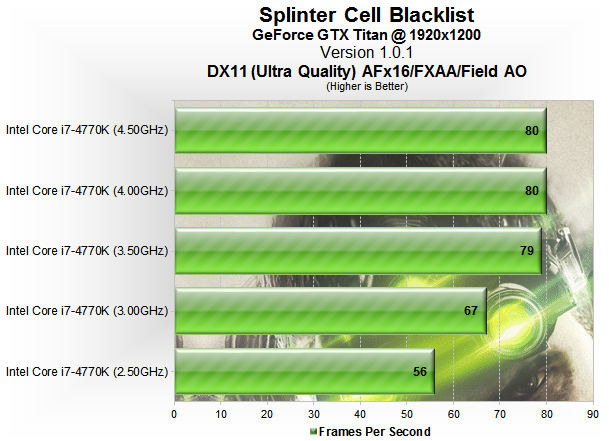Benchmarks: CPU Performance

Most CPUs extracted the maximum amount of performance from the GTX Titan, though it's worth noting that there was a 14% increase between the FX-8150 and FX-6350. It probably also goes without saying that you'll want to play on an Intel Core processor for the best performance – even an i3 will do. To its credit, the older FX-8150 also did well if you overlook the fact that it was bested by the i3-3220.
We were surprised by how poorly some of AMD's older processors performed. For starters, the X6 1100T bombed with just 45fps and the speedier X4 980 wasn't much better at 49fps. AMD's APUs won't serve you any better either, as the A10-5700 averaged just 41fps. Meanwhile the dual-core Phenom II X2 570 was accompanied by all of AMD's Athlon parts in being unable to deliver playable results.

Clock speed matters when it comes to scaling with the FX-8350, as there was a 52% difference in performance when going from 2.5GHz to 4.5GHz. We also received a 7% increase when going from the default operating frequency of 4GHz to 4.5GHz. The only problem with the FX-8350 is that it's already clocked incredibly high, leaving little headroom out of the box for you to play with.

The GTX Titan's frame rate peaked at around 80fps, which is good news for Intel users as the Core i7-4770K almost achieved this at its default clock of 3.5GHz. Going to 4GHz and then 4.5GHz gained just 1fps, while dropping the frequency to 3GHz saw a sharp decline in performance as the average frame rate fell 15%. Lowering the clock from 3GHz to 2.5GHz (a 17% reduction) cut the frame rate by 16%.
